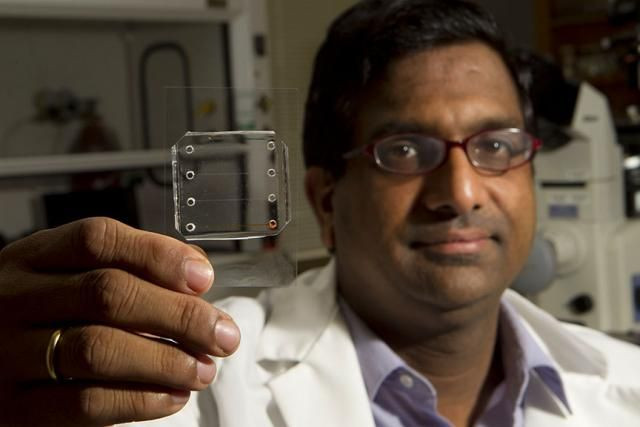Biochip Detects Flu Virus Presence

Scientists have developed a small, easy-to-use-kit for detecting presence of influenza. The biochip works by detecting the presence of RNA and isolating this RNA from the rest of the sample.
"We wanted to make something simple. It's a low-cost device for active, on-site detection, whether it's influenza, HIV, or TB (tuberculosis)," said Anubhav Tripathi, associate professor of engineering at Brown University and an author of the research.
The new device is called SMART, which stands for "A Simple Method for Amplifying RNA Targets."
Basically it is a biochip that has tubes in a series. The tubes have bulbs at each end. The chips are less than two inches across and can have four tube and bulb channels.
"The device allows us to design probes that are both sensitive and specific," Tripathi said.
The chip has tiny beads attached to the tubes. These beads have genetic sequence for the Influenza RNA sequence. The separated RNA from Influenza is slowly dragged to the bulb at the other end. The RNA, if present in the sample, is fixed at the end-bulb. Thus, the probe will have RNA at the end, free of any other biological materials.
"When we amplify the probes, we have disease detection. If there is no influenza, there will be no probes (at the end bulb). This separation part is crucial," Tripathi said.
Once the RNA is isolated, standard techniques can be used to further analyze the RNA sequence.
Published by Medicaldaily.com



























